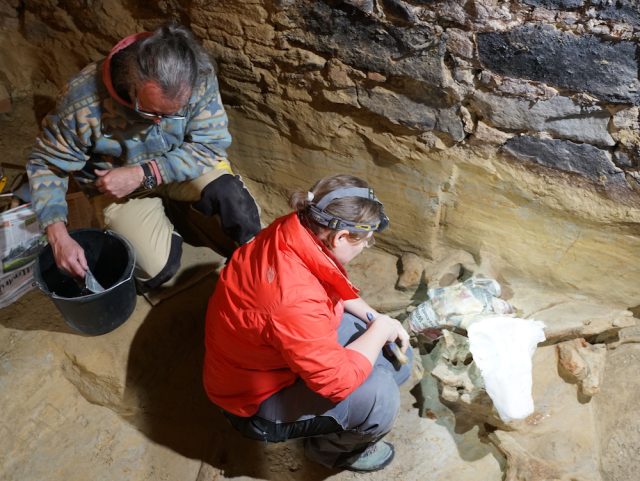Mammoth bones found in Austrian cellar
A man who was rebuilding his wine cellar made a surprising archaeological discovery, and it wasn’t a vintage bottle of Burgundy.

Winemaker Andreas Pernerstorfer found mammoth bones buried in his wine cellar in Gobelsburg, which is located within the district of Krems near to Vienna.
The region, which is around 50 miles from Vienna, is well known for its Rieslings and wineries such as Schloss Gobelsburg.
The Stone Age bones were reported to the Federal Monuments Office, which then referred him to the Austrian Archaeological Institute of the Austrian Academy of Sciences (OeAW).
Archaeologists have now been working at the site and have uncovered “several layers’ of mammoth bones in the past month.
Bone layer
According to archaeologists Thomas Einwögerer and Hannah Parow-Souchon from the Institute, the stone and charcoal remains found in the cellar range from between 30,000 and 40,000 years old. The findings suggest a “significant bone layer” which contains the remains of at least three different mammoths.
Parow-Souchon, who is leading the excavation, said “such a dense bone layer of mammoths is rare” and that it was “the first time we’ve been able to investigate something like this in Austria using modern methods.”
Partner Content
The last time similar remains were found in the country was 150 years ago when a layer of bones with flint artifacts and other fossils was found at an adjacent cellar also in Gobelsburg.
There were also other sites in Austria and neighbouring countries, but the excavations were at least one hundred years ago and have been “largely lost to modern research”.
Sizeable
The wine cellar find raised questions about how humans were able to hunt such sizeable animals with one theory being that humans laid traps for them and the mammoths died within the cellar.
Once the excavation is complete, the researchers will subsequently be handed over to the Natural History Museum in Vienna, where the bones will then be restored.
The excavations were funded by the Federal Monuments Office and the province of Lower Austria.
Related news
Royal Navy Rum Store to get £22million transformation
Patrick McGovern, 'Indiana Jones of ancient wine', dies at 80
Inside Ancient Rome’s Bacchanalia: What wine fueled the party?




